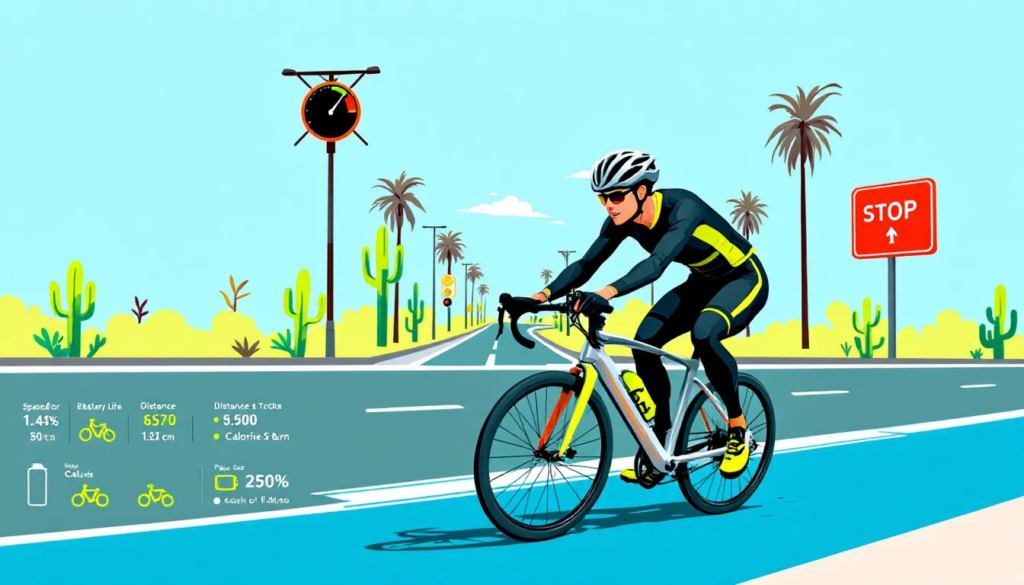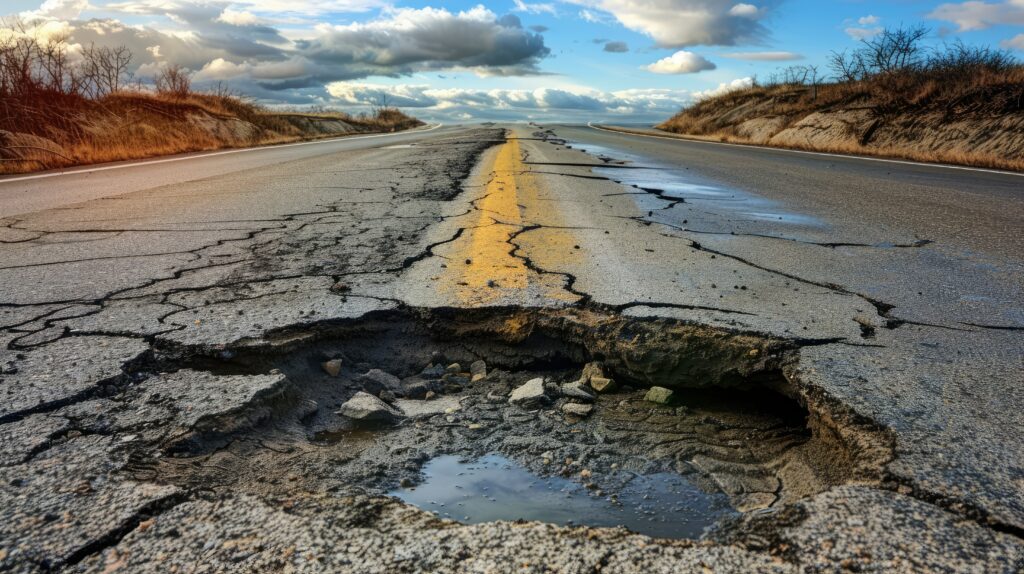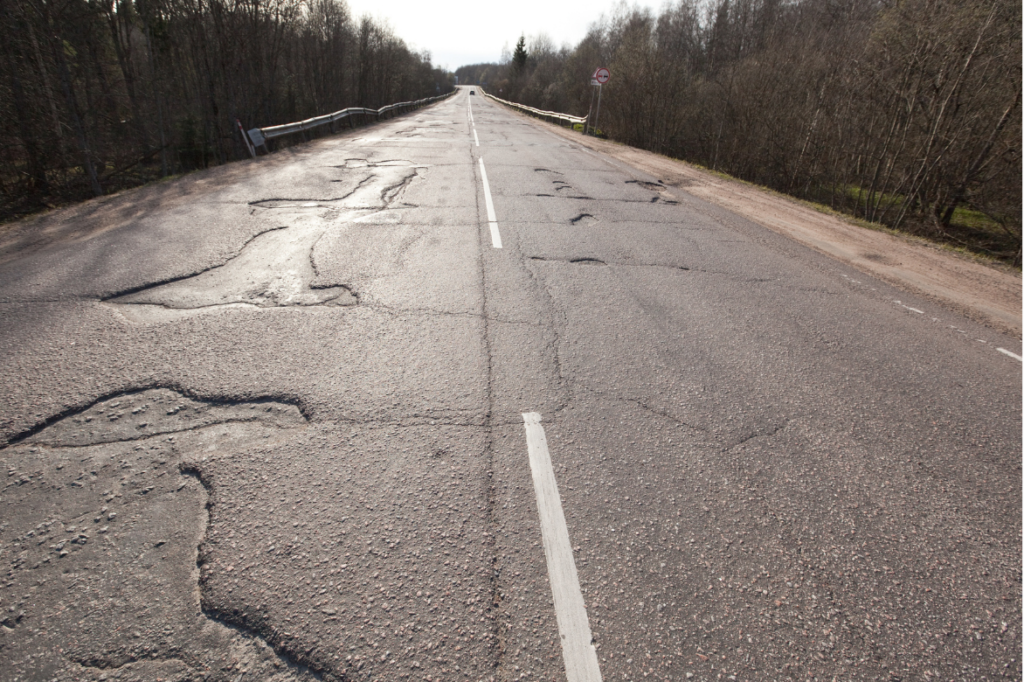Top Myths About Road Cyclists Debunked

Many myths about road cyclists create misunderstandings and safety issues. This article debunks the most common myths, providing clear explanations for better road sharing. Whether you’re a cyclist or a driver, this insight will improve your understanding. Key Takeaways Cyclists must follow the same traffic laws as motorists, including the ability to occupy the full lane when necessary for safety. While a minority of cyclists may disobey traffic rules, many adhere to them, and cyclists contribute to road maintenance through various taxes. Advancements like pedal assist bikes make long commutes feasible for cyclists, and properly designed bike lanes enhance safety in busy areas. Myth: Road Cyclists Should Always Stay to the Right One of the most common cycling myths is that road cyclists should always stay to the right, hugging the curb as closely as possible. This misconception stems from a misunderstanding of traffic laws and the practicalities of safe riding. Bicycles are often classified as vehicles, so cyclists must adhere to the same traffic laws as motorists. Cyclists must position themselves according to their speed and the traffic conditions. This often means riding to the right, but not always. For instance, if the lane is too narrow for a bicycle and a car to share side by side safely, cyclists are allowed to take up the entire lane for their safety. Moreover, at intersections, cyclists must yield if they do not have the right of way, just as motor vehicles do. When changing lanes, cyclists are required to yield to traffic in the traffic lane and car lanes they intend to occupy. This ensures that they integrate smoothly and safely into the flow of traffic. Understanding these rules helps both cyclists and motorists navigate roadways safely and efficiently, respecting each other’s rights and responsibilities. Myth: All Road Cyclists Run Red Lights A widespread myth suggests that all road cyclists run red lights, flagrantly disregarding traffic signals. This belief overlooks the responsible behavior of many cyclists who adhere to traffic rules just like other road users. This misconception likely arises from the visibility of the few who break the rules, casting a shadow over the entire cycling community. Most cyclists prioritize road safety and visibility, often positioning themselves in the middle of the street rather than sticking to bike lanes to avoid being unseen by motorists. This strategic positioning can sometimes be misinterpreted as rule-breaking when, in fact, it is a safety measure. Responsible cycling behavior is common, and many cyclists work hard to follow traffic laws and contribute to a safer road environment for everyone. Myth: Road Cyclists Don’t Pay Their Fair Share A common myth is that road cyclists do not pay their fair share for using public roads. This misconception ignores the fact that roadways are primarily funded by general taxation, not just user fees. In fact, only about 8% of roadway funding comes from user fees like gas taxes and registration fees, with the remaining 92% coming from general funds. Cyclists contribute to these general funds through various taxes, including property tax and sales tax. This means that even those who do not own a car still support the maintenance and construction of roads through state and local funding. Additionally, investments in bicycle infrastructure tend to create more local jobs compared to traditional road projects, providing both economic and social benefits. Moreover, active transportation options like cycling lead to broader social benefits, such as enhanced community interaction and reduced crime rates. By understanding these contributions, it becomes clear that cyclists do indeed pay their fair share and bring additional value to the community. Myth: Cycling on Busy Roads Is Too Dangerous The belief that cycling on busy roads is too dangerous deters many potential cyclists. However, properly designed bike lanes and protected bicycle lane paths significantly reduce the risk of accidents. Research shows that cyclist safety improves with the increase in adequate infrastructure and road infrastructure in urban areas. High-traffic locations with well-marked bike lanes are associated with lower injury rates compared to roads without dedicated cycling space. For instance, the installation of separated cycle tracks in roundabouts can lead to a substantial decrease in injury rates among cyclists. These infrastructure improvements make cycling a safer and more viable option, even in busy urban areas. Cyclists need to be aware of their surroundings and use strategies like signaling their intentions and merging into traffic lanes cautiously when necessary for safety. By adopting these practices, cyclists can navigate busy roads more safely and confidently. Myth: You Need Expensive Gear to Ride Safely Many believe that to ride safely, cyclists need to invest in expensive gear. This myth can discourage new cyclists from taking up the activity. In reality, safety can be achieved with budget-friendly options without compromising on protection or comfort. Quality safety equipment, such as helmets and lights, can be found at affordable prices. Reflective materials and lights are essential for visibility, and there are plenty of cost-effective options available. Cycling gloves, which provide protection and comfort, are another example of budget-friendly gear that can enhance the riding experience. Believing that only high-end gear ensures safety is a common cycling myth that needs to be debunked. Myth: Only Athletes Can Be Road Cyclists The idea that only elite athletes can be road cyclists is another myth that needs debunking. Cycling is an inclusive activity that welcomes people of all shapes, sizes, and fitness levels. Many everyday people enjoy cycling, not just elite athletes. There is no specific body type required to enjoy cycling; anyone can participate and benefit from this healthy activity. Cycling is increasingly recognized as a fitness activity suitable for individuals from all walks of life. Consistent riding can help build cycling fitness, and pedal assist bikes make longer trips feasible and enjoyable for many. This versatility shows that cycling can cater to individual preferences and needs, making it accessible to a wide audience. Myth: Road Cyclists Are a Menace to Other Road Users The idea that road cyclists and bicycle riders are
Top Texas E-Bike Laws: What You Need to Know for Safe Riding

Understanding Texas e-bike laws is crucial for staying safe and legal on the road. This guide breaks down the different e-bike classes, key riding regulations, and local rules to ensure you’re fully informed. Key Takeaways Texas law classifies e-bikes into three categories: Class 1 (pedal-assist up to 20 mph), Class 2 (throttle-assisted up to 20 mph), and Class 3 (pedal-assist up to 28 mph, with age restrictions). E-bike riders must adhere to traffic laws similar to traditional bicycles, including local regulations, helmet laws for those under 18, and speed limits based on the path or lane. E-bikes offer significant environmental, health, and economic benefits, including lower emissions, improved fitness, and reduced commuting costs, contributing to their increasing popularity and evolving legislation in Texas. Understanding E-Bike Classes in Texas Texas law defines electric bicycles into three distinct categories based on their speed and motor assistance. Knowing these classes helps you comply with Texas electric bike laws and promotes a safe riding experience. Each class has specific attributes that determine where and how you can ride these e-bikes. Class 1 e-bikes provide pedal-assist up to 20 miles per hour, while Class 2 e-bikes, on the other hand, come equipped with a throttle that allows them to reach speeds of up to 20 miles per hour without pedaling. Lastly, Class 3 e-bikes offer pedal-assist up to 28 miles per hour but require riders to be at least 16 years old, showcasing the benefits of assisted speed. This classification system regulates e-bike use, ensuring compliance with the Texas transportation code without requiring a license, registration, or insurance. Class 1 E-Bikes Class 1 e-bikes are a popular choice among e-bike riders due to their simplicity and ease of use. These electric bicycles provide pedal-assist up to 20 miles per hour and are equipped with fully operable pedals, making them ideal for riding on bike lanes and bike paths. Class 1 e-bikes have no age restrictions in Texas, making them accessible to everyone from young teens to older adults. Combining the benefits of an electric motor with the feel of a regular bike, they are versatile for various riding conditions, including non-motorized trails and motorized vehicle zones where allowed. Class 2 E-Bikes Class 2 e-bikes stand out for their throttle feature, allowing riders to reach speeds of up to 20 miles per hour without the need to pedal. This feature is convenient for those who want a break from pedaling or prefer a more relaxed ride. They also have fully operable pedals, allowing riders to use pedal assist if desired. Similar to Class 1, Class 2 e-bikes have no age restrictions in Texas, making them accessible to a wide range of riders. Class 3 E-Bikes Class 3 e-bikes offer a more robust riding experience with their ability to provide pedal-assist up to 28 miles per hour. However, Texas regulations require riders to be at least 16 years old due to the higher speeds of Class 3 e-bikes. These electric bikes are ideal for those looking for a faster commute or a more vigorous workout, but it’s important to remember that they come with additional responsibilities and restrictions compared to Class 1 and Class 2 e-bikes. Key Regulations for Riding E-Bikes in Texas Riding e-bikes in Texas comes with a set of regulations that ensure the safety of both the rider and the public. According to the Texas transportation code, e-bikes are classified as bicycles, which means they must adhere to the same traffic laws as traditional bicycles. This means following local traffic rules, which can vary depending on the area. Additionally, e-bike riders must be aware of DUI laws, as these apply to e-bike riders on public roads just as they do to car drivers. Modifying an e-bike to exceed its legal speed limits can lead to it being reclassified as a motor vehicle, which would require licensing, registration, and insurance. Understanding and complying with the specific regulations for each e-bike class helps avoid legal issues. Always check local authority guidelines, as additional rules may apply in different areas. Helmet Laws Helmet laws in Texas are especially important for younger e-bike riders. It is mandatory for anyone under the age of 18 to wear a helmet while riding an e-bike. This requirement is even more stringent for Class 3 e-bikes, where riders must wear a helmet if they are under 18 and meet the minimum age requirement of 16 to operate the bike. Although helmets are not mandatory for riders over 18, they are highly recommended for safety. Speed Limits Adhering to speed limits is essential for safe and legal e-bike riding. Class 2 e-bikes, for example, must have their motor shut off at 20 miles per hour. All e-bikes should adhere to the speed limits established for the paths they use. If riding on a path or lane with a lower speed limit, you must comply regardless of your e-bike’s capabilities. Following speed limits ensures the safety of all trail and road users. Bike Lanes and Paths E-bikes are generally allowed on bike lanes, multi-use paths, and roads with speed limits up to 35 mph. On shared paths, e-bike riders should reduce speed around pedestrians and announce their presence when overtaking. Yielding to pedestrians and respecting other users’ space maintains safety and harmony on shared trails. Keeping noise levels down is courteous and preserves the natural experience for all trail users. Local Authority Regulations Local authorities in Texas have the power to enforce additional regulations on e-bike usage. While cities cannot restrict e-bikes in places where bicycles are allowed, they can implement specific rules that may vary from state laws. This flexibility allows municipalities to address the unique needs and concerns of their communities, ensuring that e-bike use is safe and harmonious with other forms of transportation. Knowing local regulations is important for e-bike riders, as rules can vary significantly from city to city. Check local ordinances and rules for the areas you plan to ride to avoid legal issues and ensure compliance. City-Specific
Essential Guide to Uninsured Motorist Coverage for Cyclists

Uninsured motorist coverage offers added protection for cyclists against financial risks from drivers lacking sufficient insurance. On the road, cyclists face vulnerability, and accidents with uninsured or underinsured drivers can cause significant financial strain. It mitigates these risks by covering medical expenses, lost wages, and property damage.
There are two main types of uninsured motorist coverage that cyclists should be aware of: bodily injury and property damage coverage. Uninsured Motorist Bodily Injury (UMBI) coverage helps with medical expenses if a cyclist is injured by an uninsured driver, ensuring necessary medical attention without the full financial burden.
Property damage coverage aids in repairing or replacing a damaged bicycle, protecting the cyclist’s financial well-being.
Adding uninsured motorist coverage to an existing car insurance policy ensures cyclists have vital protection. This addition offers peace of mind, knowing they won’t face financial repercussions alone if an accident with an uninsured driver occurs. Additionally, it can extend to cover lost wages and other associated costs resulting from accidents.
Rising Toll: Bikers Killed Every Year and How to Improve Safety

In 2022, 1,105 bikers were killed every year while bicycling. This article looks at the statistics, major causes, and ways to improve biker safety, particularly in light of the alarming number of bikers killed every year. Key Takeaways Bicyclist fatalities reached a record high of 1,105 in 2022, highlighting a troubling upward trend since 2010. Motor vehicle collisions, particularly with light trucks, are the leading cause of cyclist deaths, with urban areas accounting for 83% of fatalities. Implementing safety measures such as improved infrastructure, helmet usage, and community engagement are crucial to reducing cyclist fatalities and enhancing overall safety. The increase in people bicycling for commuting and recreation has highlighted the need for improved safety measures. Annual Statistics of Bikers Killed by Fatal Injuries The numbers paint a sobering picture. In 2022, 1,105 bicyclists lost their lives in motor vehicle accidents, the highest recorded fatalities ever. This figure is part of a troubling trend. Bicyclist fatalities have shown a steady increase since 2010, peaking at 966 in 2021. The previous high before 2022 was 1,003, underscoring a consistent upward trajectory. These statistics are more than just numbers; they represent lives cut short and families devastated. In 2021 alone, bicyclists were involved in 2.2% of all traffic fatalities, a stark reminder of the vulnerability of those on two wheels. The average age of cyclists killed in these accidents was 49 years, indicating that this is not just an issue affecting young or inexperienced riders. According to data from the U.S. Census Bureau, the percentage of U.S. workers who travel to work by bicycle has shown fluctuations over the years, indicating changing trends in bicycling habits. The available data from the past decade calls for action. With increased urbanization and more people riding bicycles, the need for improved safety measures is pressing. The rise in fatalities highlights the urgent requirement for comprehensive strategies to protect cyclists. Common Causes of Fatal Bicycle Accidents Understanding the common causes of fatal bicycle accidents is crucial for developing effective prevention strategies. Collisions with motor vehicles often result in severe injuries or fatalities, frequently due to driver distraction, improper lane changes, or failure to yield. Cyclists face heightened risks in urban areas, where traffic density and congestion increase the likelihood of accidents. Additionally, helmet usage plays a crucial role in preventing fatal injuries. Each of these factors uniquely contributes to the overall risk profile for cyclists. Motor Vehicle Collisions Motor vehicle collisions are the leading cause of cyclist fatalities, with light trucks being particularly dangerous. In 2021, light trucks were responsible for 46% of bicyclist deaths. The sheer size and weight disparity between bicycles and motor vehicles put cyclists at a significant disadvantage, often leading to severe injuries or fatalities in the event of a crash. The statistics underline the need for improved safety measures to protect a cyclist injured from motor vehicle collisions. Driver distraction, fatigue, and improper lane changes commonly contribute to these tragic incidents. It’s clear that addressing these issues requires a multifaceted approach, including better driver education and stricter enforcement of traffic laws. Urban Area Risks Urban areas pose significant risks for cyclists, with a staggering 83% of cyclist fatalities occurring in these environments. The higher volume of traffic and congestion in cities contributes to increased rates of fatal bicycle injuries. In 2021, urban areas saw around 85% of bicyclist fatalities, up from 69% in 2011, highlighting a growing problem. The high traffic density and frequent interactions between vehicles and cyclists in urban settings create a dangerous environment. Enhancing urban infrastructure and reducing traffic congestion can significantly improve cyclist safety. Helmet Usage Helmet usage is crucial in preventing fatal injuries in bicycle accidents. Wearing a helmet can reduce the risk of severe head injuries by up to 73%. Despite this, data shows that 62% of bicyclists killed in 2022 were not wearing helmets, underscoring the importance of this simple yet effective measure. Helmets provide essential head protection, significantly decreasing the severity of injuries in a crash. Encouraging more cyclists to wear helmets could dramatically reduce fatalities and serious injuries. Risk Factors for Cyclists Several risk factors contribute to the high rate of cyclist fatalities. Most fatal crashes occur during dawn, dusk, or nighttime, accounting for 56% of all cases. Poor visibility during these times increases the risk. Additionally, adverse weather conditions can impair a cyclist’s control and decrease visibility, making it crucial to adapt speed and use reflective gear. Implementing safety measures like proper bike maintenance and wearing protective gear can significantly lower the chances of accidents and fatalities. Enhancing street lighting and ensuring cyclists are visible to drivers are crucial steps in reducing these risks. Impact of Speed Limits on Bicycle Safety Speed limits play a crucial role in bicycle safety. Reducing average vehicle speeds can lead to significantly fewer bicycle accidents and less severe injuries. A motor vehicle traveling at 25 mph poses a lower risk of serious injury to cyclists compared to one at 40 mph. Effective speed management strategies, such as lowering slower speed limits and implementing automated speed enforcement, can enhance safety for cyclists. The design of public roadways can also be modified to naturally calm traffic, further enhancing safety for cyclists. Reducing speed limits in busy areas can create safer environments that encourage more cycling and walking. Legal Aspects and Compensation for Families Families of cyclists killed in accidents have legal options to seek compensation. A wrongful death claim can cover funeral costs and the loss of financial support from the deceased. Compensation in bicycle accident lawsuits can also include medical expenses, lost income, pain and suffering, and property damages. Consulting a personal injury attorney can help victims and their families navigate the legal process and secure fair compensation. The clarity of fault in an accident significantly influences the potential settlement amount. Safety Measures to Reduce Fatalities Implementing safety measures is crucial to reducing cyclist fatalities. Adverse weather and lack of adequate safety equipment significantly raise the injury risk for cyclists in crashes. The following subsections
Maricopa County Bike Laws for Cyclists

Are you confused about the bike laws in Maricopa County? This guide provides clear information on the requirements for cyclists, including helmet usage, bike lane rules, night riding regulations, and required safety gear, all of which are part of the Maricopa County bike laws. Stay compliant and safe by understanding these local laws. Key Takeaways Cyclists in Maricopa County must follow the same traffic laws as motor vehicles and are required to use designated bike lanes when available. Helmet use is mandatory for riders under 18, and while adults aren’t legally required to wear helmets, it’s strongly recommended for safety. Night riding requires bikes to have functional lights and reflectors, and cyclists should maintain a safe distance from motor vehicles to avoid accidents. Understanding Maricopa County Bike Laws Maricopa County has established specific bike laws to enhance cyclist safety and regulate bicycle operation within the area. Cyclists here must adhere to the same traffic laws as motor vehicle drivers, ensuring a predictable and safe environment for everyone on the road. The trail consists of various features such as elevation changes and diverse terrain, offering both physical challenges and scenic views. Educational programs often include training on safe riding practices and local cycling laws, helping cyclists stay informed and compliant. These laws are not just about rules; they are about creating a harmonious and safe cycling community. Helmet Requirements In Maricopa County, wearing a helmet is mandatory for riders under the age of eighteen. This law aims to protect young cyclists from serious head injuries, which are significantly reduced by helmet use. Although adult bikers are not legally required to wear helmets, it’s highly recommended for all ages to enhance safety while riding. Bike Lane Usage Cyclists in Maricopa County are required to use designated bike lanes where available. These trail passes through various areas and landscapes, offering scenic views, residential areas, and access to parks. However, they can leave these lanes when necessary, such as to navigate intersections safely or avoid obstacles. Adhering to bike lane rules ensures a smoother ride and reduces the risk of accidents. Night Riding Regulations Night riding in Maricopa County requires cyclists to equip their bikes with lights and reflectors to enhance visibility. Front and rear lights are encouraged to ensure that cyclists are seen by other road users. A working brake system is also necessary for safety during nighttime rides. Safety Gear and Equipment Protective gear is a necessity for compliance with bike laws in Maricopa County. Cyclists are required to use specific safety gear to ensure their own safety and the safety of others. Visible clothing and bike lights are crucial during low visibility conditions, ensuring cyclists are easily seen by drivers and other road users. Required Bike Features Arizona law mandates that bicycles must be equipped with functional brakes to ensure safe stopping. Additionally, a bell or horn is required to alert pedestrians and other cyclists of your presence. These features are essential for complying with local regulations and ensuring a safe riding experience. Recommended Safety Gear While not all safety gear is legally required, items like helmets, biking gloves, and mirrors are highly recommended. Helmets provide critical head protection, while gloves enhance grip and comfort during rides. Mirrors help cyclists stay aware of their surroundings, and padded shorts can make longer rides more comfortable by reducing chafing. Rules of the Road for Cyclists Just like motor vehicle drivers, cyclists must follow traffic rules to ensure safety on the road. This includes obeying stop signs, traffic lights, and other signals. Riding predictably and being aware of your surroundings are key practices to enhance safety when sharing the road with cars. Always remember that cyclists are more vulnerable in collisions, so extra caution is necessary. Traffic Signals and Signs Failing to stop at stop signs and running red lights are common infractions among cyclists. To ensure safety, cyclists must adhere to traffic signals and signs just like any other road user. Proper lighting at night is also crucial to avoid violations and accidents. Right-of-Way Establishing eye contact with drivers is a simple yet effective way to confirm visibility and ensure mutual understanding at intersections. This practice helps prevent accidents and ensures that both cyclists and drivers are aware of each other’s presence. Following right-of-way rules is essential for safety and predictability in traffic situations. Passing and Being Passed When passing other vehicles, cyclists should always signal their intentions and maintain a safe distance. Similarly, when being passed by motor vehicles, cyclists should ride in a straight line and stay aware of their surroundings to avoid sudden movements. These practices greatly reduce the risk of accidents on the road. Interacting with Motor Vehicles Interacting safely with motor vehicles requires cyclists to yield to pedestrians in crosswalks and follow specific right-of-way rules. Unfortunately, motorists often lack awareness of the laws regarding cyclists, leading to misunderstandings about shared roadway rights. Educating both drivers and cyclists on these laws is crucial for safer interactions on the road. Safe Distance Maintaining a safe distance from motor vehicles is crucial for preventing accidents. Cyclists are advised to keep at least three feet away from moving vehicles and four feet from parked cars to avoid being caught by suddenly opened doors. On narrow roads, ride as far to the right as safely possible while maintaining this minimum distance. Communicating Intentions Using hand signals is essential for cyclists to indicate turns and stops to drivers. This practice helps drivers anticipate cyclists’ movements and avoid collisions. When overtaking other cyclists, make sure there is adequate space and signal your intentions clearly. Urban Trails and Bike Paths Maricopa County is blessed with numerous urban trails and bike paths that cater to cyclists of all skill levels. Bicycle programs in Arizona play a crucial role in promoting safe cycling and enhancing local infrastructure. SARA Park offers a variety of recreational activities, with stunning scenery and vistas of the city’s namesake lake, making it a popular spot for mountain biking. These resources, including bike
Regional Bicycle and Pedestrian Plan: A Road Cyclist’s Comprehensive Guide to Southern Nevada

Southern Nevada is rapidly transforming into a haven for cyclists, thanks to the Regional Transportation Commission of Southern Nevada’s (RTC) 2017 Regional Bicycle and Pedestrian Plan (RBPP). This ambitious initiative strives to create a comprehensive network of safe, convenient, and accessible cycling routes across urban and suburban areas, catering to cyclists of all ages and abilities. Whether you’re a casual rider or a dedicated road cyclist, the infrastructure upgrades laid out by the RTC will dramatically enhance the cycling experience throughout Southern Nevada. In this comprehensive guide, we’ll explore the details of the RBPP, covering current cycling infrastructure, plans for future expansion, and the benefits these developments will bring to road cyclists. We’ll also discuss the safety challenges cyclists still face and why cyclists involved in accidents should seek the expertise of Lawyers 4 Cyclists, a dedicated legal team specializing in bike-related incidents in Nevada. Vision for Cycling in Southern Nevada At the heart of the RBPP is a vision for a connected, safe, and convenient cycling system that enhances both recreational and transportation opportunities for all users. The plan supports broader goals for economic development, health improvements, environmental sustainability, and equitable access to transportation. This vision is aligned with the Southern Nevada Strong initiative, a regional strategy focused on sustainable growth and long-term economic success. Key goals of the RBPP include: The ultimate goal is to make cycling a viable, safe, and attractive option for all Southern Nevadans, helping to reduce car dependency and improve air quality in the process. Current Bicycle Infrastructure in Southern Nevada As of 2017, Southern Nevada has 868 miles of bike lanes, shared paths, and bike routes. However, only about 46% of these facilities meet the “high-comfort” standards, meaning they are suitable for cyclists of all ages and experience levels. High-comfort routes include features like buffered bike lanes, separated bike lanes, and shared-use paths that physically separate cyclists from traffic, providing a safer and more enjoyable riding experience. The breakdown of current bike infrastructure in the region is as follows: Despite these existing facilities, there are significant gaps in the network, particularly in high-density urban areas like Las Vegas. Cyclists frequently face challenges such as narrow bike lanes, high traffic volumes, and intersections without adequate cyclist protections. This incomplete infrastructure has left many cyclists, particularly less experienced riders, feeling unsafe or discouraged from using the existing bike network. Future Plans for Expansion The RBPP aims to dramatically expand and improve the cycling infrastructure in Southern Nevada by adding 1,336 miles of new bike facilities. This expansion will bring the total network to 2,023 miles, with a focus on creating “high-comfort” routes that cater to all riders, including families, children, and less confident cyclists. Key areas of focus include: When fully implemented, the RBPP will transform Southern Nevada into one of the most bike-friendly regions in the western United States. About 73% of the future bike network will consist of high-comfort facilities, compared to just 46% today. This will make it easier and safer for cyclists of all ages to navigate the region, whether for commuting, exercise, or leisure. Safety Challenges for Road Cyclists Despite the optimistic outlook, road cycling in Southern Nevada remains fraught with dangers. Between 2011 and 2015, the region experienced an alarming increase in bicycle-related accidents. Most crashes occurred on roadways with speed limits between 35 and 45 mph, where cyclists are particularly vulnerable to fast-moving traffic. Key factors contributing to these accidents include inadequate bike lanes, poor lighting, and intersections that fail to accommodate cyclists. The RBPP addresses these concerns by recommending several critical safety improvements, including: However, until these improvements are fully realized, road cyclists in Southern Nevada must remain vigilant and cautious, particularly when riding in high-traffic areas. Public Involvement in the RBPP Public participation has been a crucial element in the development of the RBPP. The RTC has conducted extensive outreach to gather input from cyclists and other stakeholders, ensuring that the plan reflects the needs and desires of the community. More than 1,000 people responded to surveys, and over 1,200 comments were submitted through interactive mapping tools, which allowed residents to propose new bike routes and highlight problem areas. The feedback gathered through this process has helped shape the final recommendations of the RBPP. Cyclists consistently expressed a desire for: The RBPP aims to address these concerns while promoting cycling as a viable and attractive transportation option for all residents. Legal Considerations for Cyclists in Nevada While the RBPP will undoubtedly make Southern Nevada safer for cyclists, accidents remain a reality. When an accident occurs, cyclists often face significant challenges when dealing with insurance companies, medical bills, and legal claims. This is where Lawyers 4 Cyclists can help. Here’s why it’s crucial to hire a dedicated cycling attorney after an accident: Whether you’ve been involved in a minor crash or a serious accident, Lawyers 4 Cyclists can provide the legal support you need to recover both physically and financially. Conclusion: A Brighter Future for Southern Nevada Cyclists The Regional Bicycle and Pedestrian Plan marks a significant step forward in making Southern Nevada a safer and more enjoyable place for cyclists. With ambitious plans to expand high-comfort bike lanes, improve safety measures, and increase connectivity, the future of cycling in the region looks bright. However, until these plans are fully implemented, road cyclists must remain cautious, particularly in high-traffic areas where accidents are more likely to occur. If you are involved in a cycling accident, don’t navigate the legal complexities alone. Lawyers 4 Cyclists are here to help. With their expertise in Nevada cycling law and commitment to protecting cyclists’ rights, they can provide the legal guidance you need to get back on the road with peaceon. Whether it’s managing insurance claims, handling medical costs, or seeking compensation for damages, Lawyers 4 Cyclists have the expertise to support you at every step. To learn more about how you can stay safe on Nevada’s roads and how Lawyers 4 Cyclists can help if you’re involved in an
Las Vegas Cycling: A Guide to Cycling in the Desert

Las Vegas, Nevada, and the surrounding areas of Clark County offer unique opportunities for cyclists, from scenic desert rides to vibrant city routes. However, with the joy of cycling in this region comes the responsibility to understand the laws that govern road cycling and to be aware of the risks, including the unfortunate reality of bicycle accidents. Whether you are a recreational cyclist, a commuter, or a serious rider, knowing the legal framework and accident trends is essential for your safety and well-being. This comprehensive guide will explore Nevada’s cycling laws, review the bicycle accident statistics in Clark County, highlight popular cycling routes, and offer safety tips. Additionally, we will explain why, in the unfortunate event of an accident, hiring Lawyers 4 Cyclists is the best step to take to protect your rights and ensure you receive fair compensation. Understanding Nevada’s Bicycle Laws: A Focus on Clark County Cycling laws in Nevada are designed to ensure that cyclists and motorists can safely share the road. In Las Vegas and greater Clark County, understanding these rules is crucial to avoid accidents and stay on the right side of the law. Below is a detailed look at the key laws governing road cycling in Nevada, with direct references to the Nevada Revised Statutes (NRS). 1. Definition of a Bicycle in Nevada Law (NRS 484A.025) According to Nevada law, a bicycle is defined as a device propelled by human power, with two wheels. Legally, bicycles are considered vehicles, which means cyclists must obey the same traffic laws as motor vehicles, giving them both rights and responsibilities on the road. 2. Riding on Roadways (NRS 484B.777) Cyclists are required to ride as far to the right side of the roadway as practicable, except in specific circumstances such as preparing for a left turn, overtaking another cyclist or vehicle, or avoiding hazards like debris or parked cars. The law also allows cyclists to ride on paved shoulders. 3. Riding Two Abreast Cyclists are allowed to ride two abreast in a single lane but must move to single file if traffic needs to pass. This is particularly important on narrow roads where space is limited. 4. Hand Signals (NRS 484B.769) Cyclists must use hand signals to indicate their movements. Using clear, legally recognized signals is key for communicating with motorists and other road users, thereby reducing the risk of accidents. 5. Helmet Use Although Nevada does not require cyclists to wear helmets by law, wearing a helmet is a smart choice, particularly for younger riders or those on busy roads. Helmets can greatly reduce the risk of severe head injuries. 6. Lights and Reflectors (NRS 484B.783) When riding at night, cyclists must have a front light and a rear reflector. These visibility requirements are vital for staying safe on the road after dark. 7. Sidewalk Riding (NRS 484B.787) In Las Vegas, riding on the sidewalk is generally permitted, except in business districts where it may be prohibited. Cyclists must yield to pedestrians and give an audible signal when passing. 8. Intersections Cyclists must follow all traffic signals and signs at intersections. They can either merge with traffic for left turns or walk their bikes across the intersection as pedestrians. 9. The “Three Feet” Rule (NRS 484B.270) One of the most crucial laws for cyclist safety is the requirement for motorists to provide at least three feet of clearance when passing a cyclist. This rule protects cyclists by giving them necessary space on the road. 10. DUI on a Bicycle (NRS 484C.110) Cyclists in Nevada can face DUI charges if they ride under the influence of alcohol or drugs. The penalties for cycling under the influence mirror those for motor vehicle drivers. Bicycle Accident Statistics in Clark County, Nevada Unfortunately, bicycle accidents in Clark County are a regular occurrence. Understanding these statistics can help cyclists take extra precautions while riding. Key Accident Data (2017-2022) Common Cycling Routes in Clark County Clark County offers a diverse range of cycling routes, from scenic desert loops to urban rides through Las Vegas. Below are some of the most popular cycling routes in the area: 1. River Mountains Loop Trail A 34-mile loop that provides cyclists with breathtaking views of Lake Mead and the surrounding desert. This trail is a great option for both recreational riders and those looking for a challenge. 2. Red Rock Canyon Scenic Loop A 13-mile ride through the stunning Red Rock Canyon National Conservation Area. Known for its steep climbs and rewarding descents, this route is a favorite among experienced cyclists. 3. The Las Vegas Strip Cycling the Strip offers a unique experience, particularly early in the morning when traffic is light. The route is more for the adventurous rider given the heavy vehicle and pedestrian traffic. 4. Floyd Lamb Park to Tule Springs This relaxing route takes cyclists through the scenic Floyd Lamb Park and Tule Springs, making it a perfect choice for families or those seeking a leisurely ride. 5. Bootleg Canyon For mountain bikers, Bootleg Canyon near Boulder City offers some of the best off-road cycling in the area, with trails for all skill levels. Tips for Safe Cycling in Nevada To stay safe while cycling in Clark County, consider these key safety tips: Cycling Crashes in Clark County: What You Need to Know Cycling in Clark County comes with inherent risks, as the number of bicycle-related crashes continues to remain steady. Intersections and high-traffic areas pose the greatest danger, and nighttime cycling presents additional risks due to reduced visibility. Many crashes result in serious injuries, including broken bones, head trauma, and long-term disabilities. If you are involved in a bicycle accident, you are not only facing physical recovery but also potentially dealing with insurance companies that may not have your best interests in mind. Insurance companies often try to shift blame onto cyclists or minimize the extent of injuries in an effort to reduce payouts. This is where expert legal representation becomes critical. Why You Should Hire Lawyers 4 Cyclists After
Navigating Roadway Hazard Claims: A Step-by-Step Guide for Injured Cyclists in California

Attorneys specializing in dangerous roadway condition bicycle crashes- Lawyers 4 Cyclists
Navigating Roadway Hazard Claims: A Step-by-Step Guide for Injured Cyclists in Arizona

Cycling in Arizona can be a rewarding way to explore the state’s beautiful landscapes, stay fit, and reduce your environmental impact. Unfortunately, dangerous road conditions can sometimes turn your ride into a disaster. Cracks, potholes, poorly maintained roadways, and insufficient signage can lead to serious accidents, leaving cyclists injured and facing significant medical bills and other losses. If you’ve been injured due to hazardous road conditions in Arizona, you may be able to pursue a claim against the government entity responsible for maintaining the roads. However, making a claim against a public entity in Arizona requires you to follow specific legal procedures, outlined in A.R.S. § 12-821.01. This guide will walk you through the steps you need to take, highlighting how Lawyers 4 Cyclists can help you navigate this complex process. Understanding Your Rights as a Cyclist in Arizona Arizona law requires public entities to maintain roadways in a reasonably safe condition for all users, including cyclists. When a public entity fails in this duty, dangerous conditions can develop on the road, putting cyclists at risk of injury. If you’ve been hurt due to a road hazard such as a pothole, debris, or poor road design, you have the right to seek compensation from the responsible public entity. In Arizona, however, claims against public entities are governed by specific legal rules, including the requirement to file a notice of claim within a strict deadline. At Lawyers 4 Cyclists, we have extensive experience handling claims for cyclists injured by dangerous road conditions, and we can help you navigate the process to ensure your claim is filed correctly and on time. Step-by-Step Process for Bringing a Claim Against a Government Entity in Arizona Step 1: Identifying a Dangerous Road Condition Before you can file a claim, it’s important to determine whether the condition that caused your accident qualifies as a “dangerous condition” under Arizona law. Dangerous road conditions can include: If you believe that a dangerous condition caused your accident, gathering evidence is essential. Lawyers 4 Cyclists can help you document the road hazard, gather witness testimony, and build a solid foundation for your claim. Step 2: Taking Immediate Action After the Accident After any accident, your health should be the top priority. Seek medical attention as soon as possible, even if your injuries don’t seem severe at first. In addition to getting medical care, gather as much evidence as you can from the accident scene. This might include: At Lawyers 4 Cyclists, we understand how important it is to gather this information quickly and thoroughly. Our team will assist you in obtaining additional evidence, such as road maintenance records, to prove that the government knew or should have known about the hazardous condition. Step 3: Filing a Notice of Claim Within 180 Days One of the most important aspects of pursuing a claim against a government entity in Arizona is complying with the strict filing deadlines outlined in A.R.S. § 12-821.01. Under this statute, you must file a notice of claim with the responsible public entity within 180 days of the date of the accident. Missing this deadline can prevent you from pursuing any compensation. Here’s what the notice of claim process entails: Once the notice is submitted, the government entity will review your claim. Lawyers 4 Cyclists can assist you with this crucial step, ensuring that your notice of claim is accurate and timely. Step 4: The Government’s Response to Your Notice of Claim Once the public entity receives your notice of claim, they have 60 days to respond. The possible responses include: If your claim is denied or the settlement offer is insufficient, the next step is to file a lawsuit. Step 5: Filing a Lawsuit After Claim Denial If the government denies your claim or fails to respond within the 60-day window, you have the right to file a lawsuit against the public entity. However, you must file the lawsuit within one year of the date of the accident, as required by A.R.S. § 12-821. Filing a lawsuit against a public entity can be complicated, and it requires a deep understanding of the legal issues involved. You’ll need to prove that the dangerous condition existed and that the government entity was negligent in addressing it. Lawyers 4 Cyclists will help you build a strong case by: We will handle every aspect of the litigation process, from filing the necessary paperwork to representing you in court. Step 6: Seeking Compensation for Your Injuries Once your lawsuit is filed, you’ll be seeking compensation for the damages you’ve suffered as a result of the accident. These damages may include: At Lawyers 4 Cyclists, we work tirelessly to ensure that you receive full and fair compensation for your injuries and losses. We understand the impact these accidents can have on your life, and we’re here to fight for your rights. Step 7: Why You Need Lawyers 4 Cyclists on Your Side Handling a claim against a public entity under A.R.S. § 12-821.01 is complex and time-sensitive. Missing even one step in the process or failing to provide the correct documentation can result in your claim being denied. That’s why it’s essential to have an experienced legal team like Lawyers 4 Cyclists on your side. We have extensive experience helping injured cyclists pursue claims against government entities in Arizona. Our team will: By choosing Lawyers 4 Cyclists, you’re partnering with a law firm that understands the unique challenges faced by injured cyclists. We’ll handle every aspect of your case so you can focus on your recovery. Conclusion: Don’t Let Dangerous Roads Go Unchallenged If you’ve been injured due to a dangerous road condition in Arizona, don’t wait to take action. The Government Claims Act in Arizona imposes strict deadlines, and missing these deadlines can prevent you from recovering the compensation you need to recover from your injuries. At Lawyers 4 Cyclists, we’re here to guide you through the entire claims process, from filing your notice of claim to pursuing a lawsuit if
Mastering California Vehicles Codes for Bicycles: Group Ride Etiquette and Safety Tips

Mastering California’s bicycle laws and group ride etiquette is essential for cyclists of all skill levels. By understanding the rules of the road and the intricacies of group ride dynamics, you can ensure a safe and enjoyable cycling experience for yourself and your fellow riders. In this blog post, we’ll delve into the California Vehicles Codes for bicycles, group ride etiquette, and safety tips to help you navigate the Golden State’s roads like a pro. Short Summary Understanding California Vehicle Codes for Bicycles As a cyclist in California, it’s crucial to be aware of the state’s bicycle laws to ensure safety and adherence to traffic regulations. These laws cover various aspects, such as riding on the right side, obeying traffic signals and signs, bicycle equipment requirements, and sidewalk cycling regulations. Not only do these rules apply to solo riders, but they’re also essential during group rides to guarantee the safety of all participants. In the following sections, we’ll provide you with a comprehensive guide on these California Vehicle Codes for bicycles and how they impact group ride etiquette and safety. Keep in mind that your local bike shop can be a valuable resource for learning about these laws and acquiring essential cycling equipment. on the Right Side Riding on the right side of the road is not only a legal requirement in California, but also a crucial aspect of group ride safety and efficiency. Cyclists must ride on the right side of the road, in line with the traffic flow, except when making a legal left turn, passing other cyclists, or riding on a one-way street, road too narrow to share, or when the right side of the road is blocked off for construction or a bike lane is unavailable. During group rides, maintaining the correct position on the road is essential to avoid accidents and ensure a smooth experience for all riders. While riding on the right side, it’s important to be mindful of the group’s pace and keep an appropriate distance from other riders. Advanced group riding skills, such as riding in a pace line or double pace line, can further enhance the efficiency of the entire group and reduce the impact of wind resistance. However, there are exceptions to riding on the right side of the road in certain situations, such as passing, preparing for a left turn, avoiding hazards, or when the lane is too narrow to share. In these instances, it’s crucial to communicate your intentions clearly to the group and move to the left when it’s safe to do so. Following these guidelines will ensure a safer and more enjoyable cycling experience for everyone involved. Obeying Traffic Signals and Signs Obeying traffic signals and signs is essential for cyclists in California, as it guarantees the safety of all road users and helps prevent accidents. Cyclists must comply with all traffic signals and signs, including stop signs, yield signs, and traffic lights, just like any other vehicle on the road. During group rides, it’s particularly important to accommodate slower riders and maintain a safe and inclusive environment for everyone involved. Failing to adhere to traffic signals and signs can result in fines or other penalties, as well as create dangerous situations for both cyclists and motorists. By following the traffic laws, you’ll not only be safeguarding yourself and others, but also promoting a positive image of cyclists in your community. Bicycle Equipment Requirements In California, certain equipment requirements must be met for a safe and legal cycling experience. Cyclists are required to have a white front light and a red rear reflector or light for nighttime use. Additionally, helmets that comply with the American National Standards Institute (ANSI) or the Snell Memorial Foundation standards must be worn by riders under the age of 18. These equipment requirements are not only essential for individual cyclists, but also play a crucial role in group ride safety. The front rider should set a good example by ensuring they have the required equipment and follow the rules of the road. Properly equipped bicycles and adherence to traffic laws contribute to a safe and enjoyable group ride experience for all participants. Sidewalk Cycling Regulations While there is no state-level prohibition against sidewalk cycling in California, it’s essential to check local ordinances in your area for any additional regulations. Cycling on sidewalks can pose risks due to the presence of pedestrians, cars, and other cyclists, so it’s important to be mindful of your surroundings and adhere to the rules of the road when doing so. Experienced riders can provide valuable insights and advice on local cycling regulations and group ride etiquette, so don’t hesitate to ask for guidance from your fellow cyclists or local bike shop. By following the appropriate sidewalk cycling regulations, you’ll ensure a safer experience for yourself and those around you, especially for new riders. Group Ride Etiquette and Safety Now that we’ve covered California’s bicycle laws, let’s dive into the key aspects of group ride etiquette and safety. In the following sections, we’ll discuss communication and signaling, formation and spacing, and sharing the road with motorists. These essential elements will help you navigate most group rides like a pro and create a safe and enjoyable experience for all participants in cycling group rides. Communication and Signaling Clear communication and signaling are vital during group rides to ensure the safety of all participants. Hand signals and verbal cues, such as “car back” or “hole,” allow riders to effectively warn others of potential hazards or changes in direction. Communication is especially important when navigating through intersections or making turns, as riders need to be aware of each other’s intentions and movements. During group rides, the lead rider has a responsibility to monitor the road ahead and alert the group to any obstacles or hazards they encounter. Likewise, tail end riders play a crucial role in calling out approaching vehicles from behind and signaling lane changes when necessary. By using a combination of hand signals and verbal cues, group


